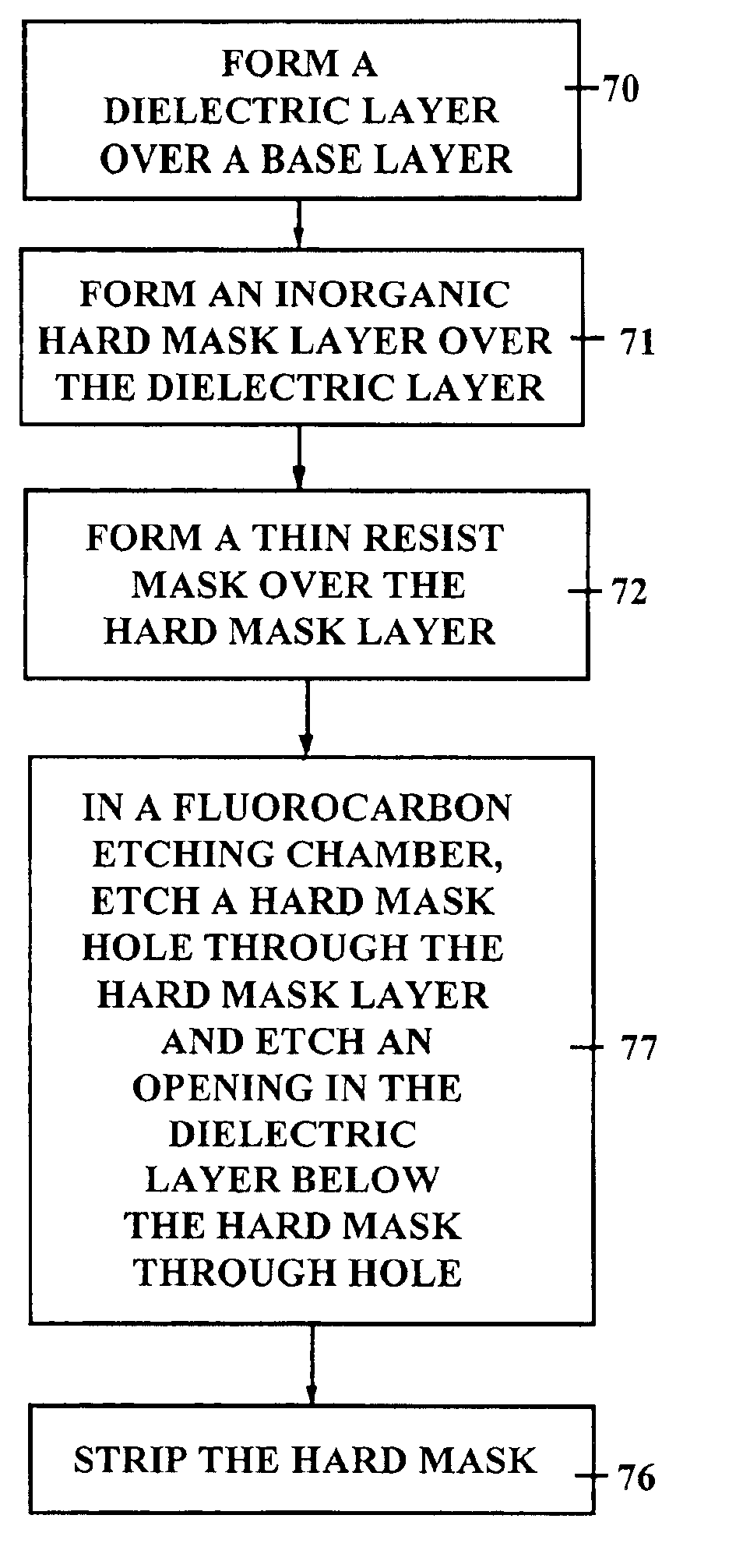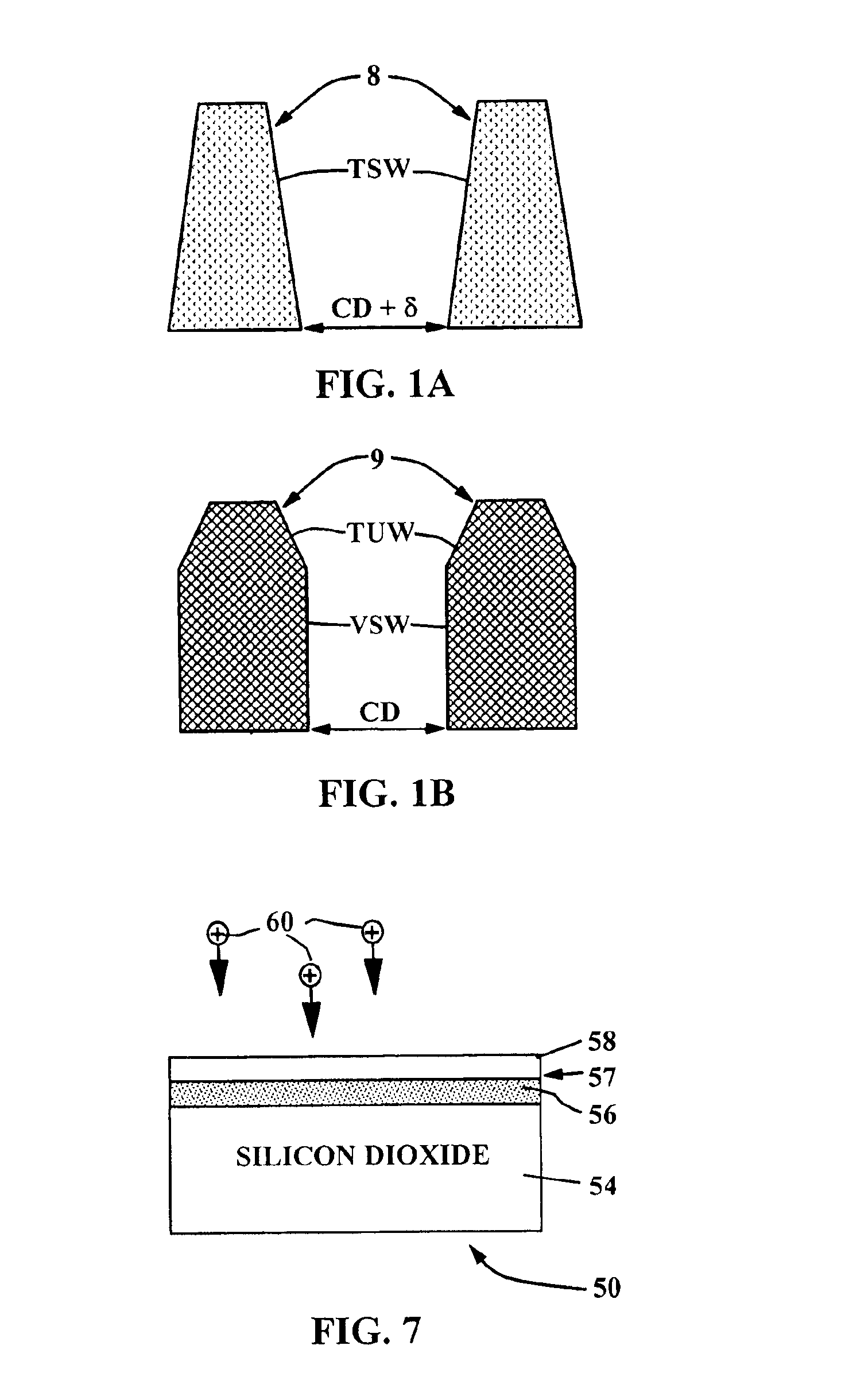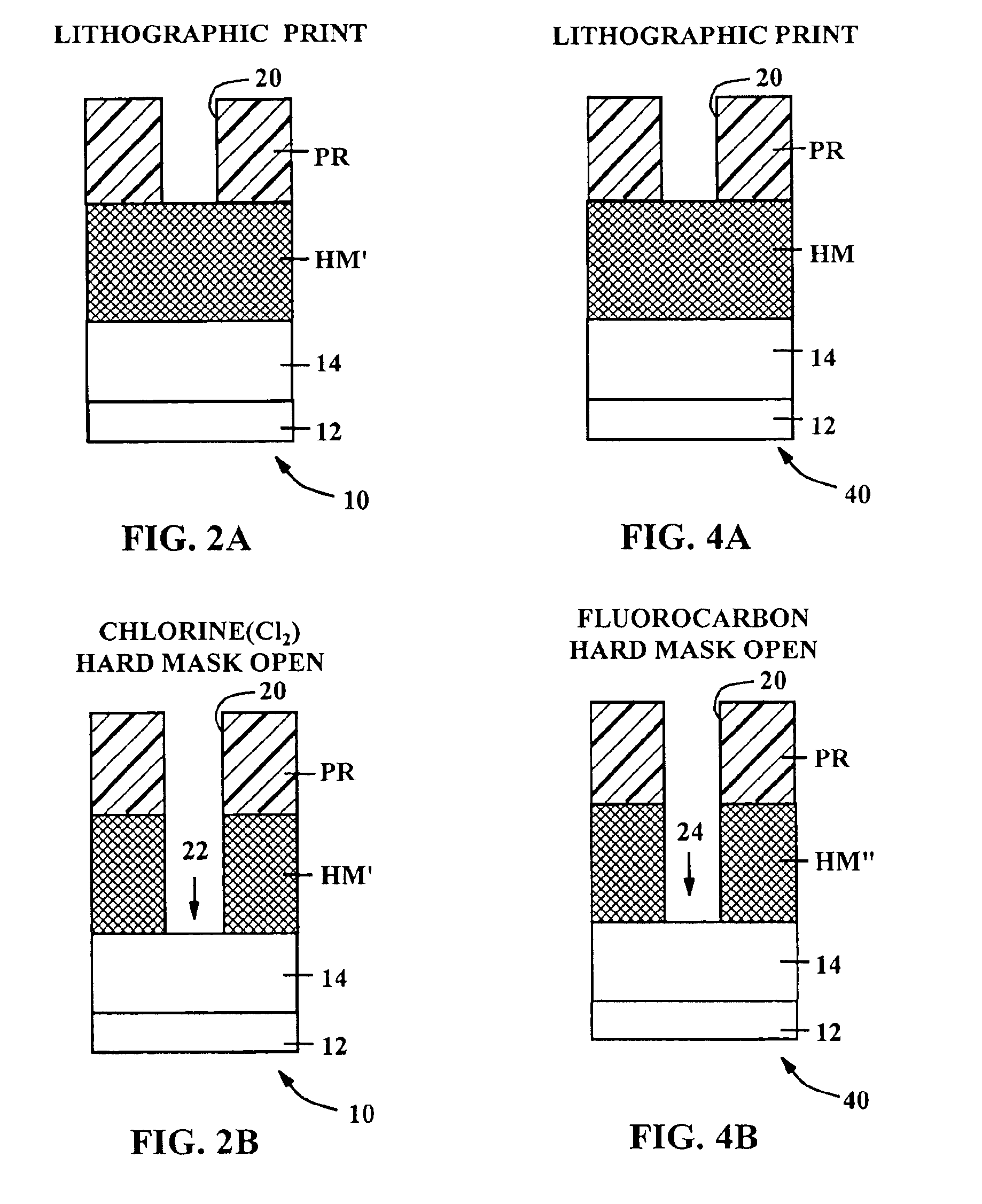Hard mask integrated etch process for patterning of silicon oxide and other dielectric materials
a technology of silicon oxide and dielectric materials, applied in the direction of decorative surface effects, electrical equipment, decorative arts, etc., can solve the problems of reducing the depth of focus of aerial images projected onto the photoresist by the photolithographic tool, reducing the effectiveness of the photoresist as a mask, etc., and achieves high anode/cathode ratio, high wattage power supply, and high polymerization level
- Summary
- Abstract
- Description
- Claims
- Application Information
AI Technical Summary
Benefits of technology
Problems solved by technology
Method used
Image
Examples
Embodiment Construction
The preferred embodiment of this invention is a process for producing deep patterns with high aspect ratios to form openings in a silicon oxide (also known as oxide) film for contacts, vias, active devices, interconnects, and inactive devices. Steps which involve etching of layers such as silicon oxide are traditionally “harsh” on the photoresist; but as stated above, with 193 nm photoresist systems, there is the additional challenge of “poorer” etching selectivity or stability. In an effort to address the poor etching selectivity of 193 nm photoresist systems we worked with tunable etch resistant ARC materials. During our development work, we discovered that the limitations on selectivity and cost restraints of the chlorine based mask opening were insurmountable. As a result, we then attempted to find a way to use fluorocarbon plasma etching processing to avoid the limitations caused by use of chlorine in the process.
We then discovered that a material such as an ARC material deposi...
PUM
| Property | Measurement | Unit |
|---|---|---|
| pressure | aaaaa | aaaaa |
| D.C. bias voltage | aaaaa | aaaaa |
| thickness | aaaaa | aaaaa |
Abstract
Description
Claims
Application Information
 Login to View More
Login to View More - R&D
- Intellectual Property
- Life Sciences
- Materials
- Tech Scout
- Unparalleled Data Quality
- Higher Quality Content
- 60% Fewer Hallucinations
Browse by: Latest US Patents, China's latest patents, Technical Efficacy Thesaurus, Application Domain, Technology Topic, Popular Technical Reports.
© 2025 PatSnap. All rights reserved.Legal|Privacy policy|Modern Slavery Act Transparency Statement|Sitemap|About US| Contact US: help@patsnap.com



